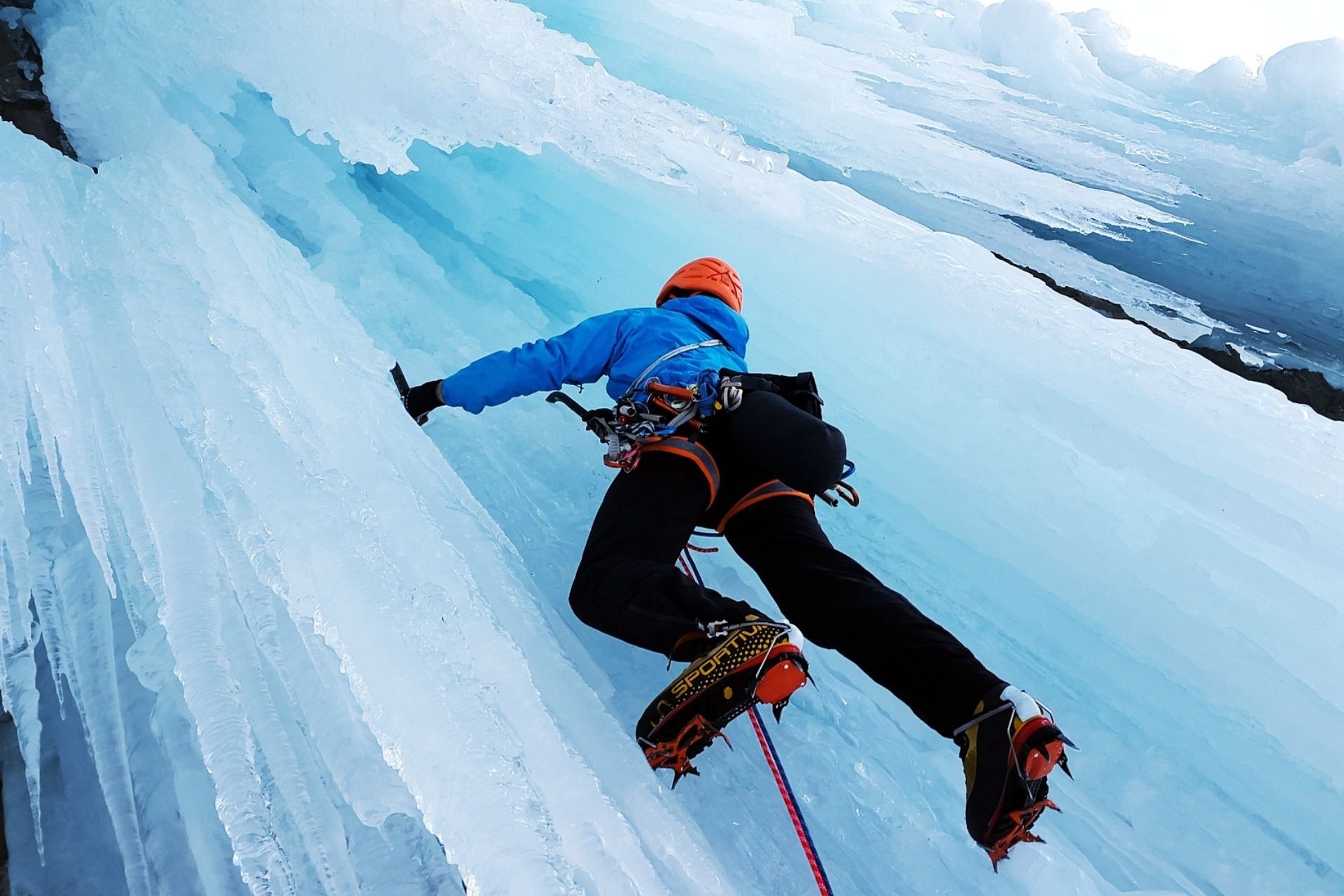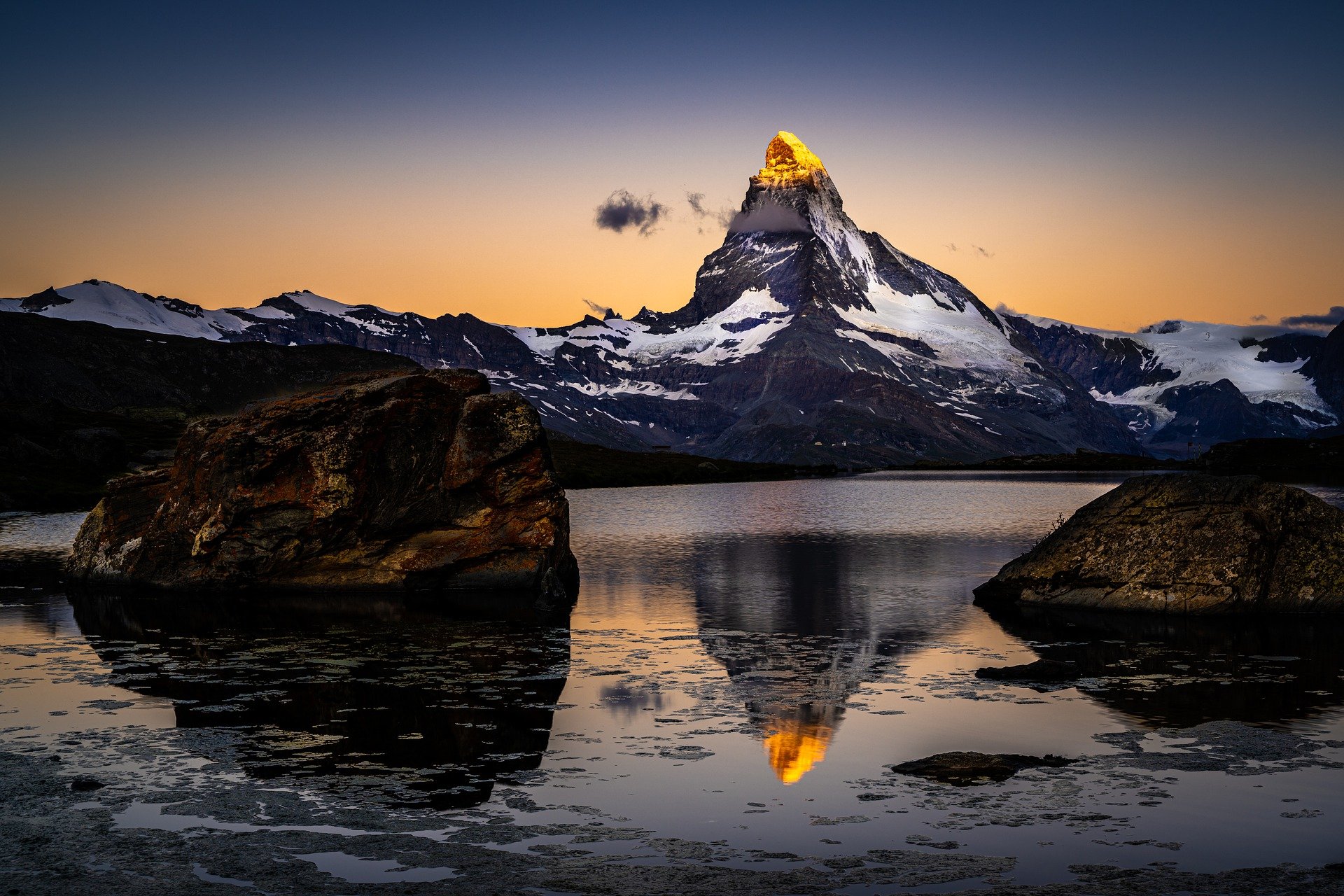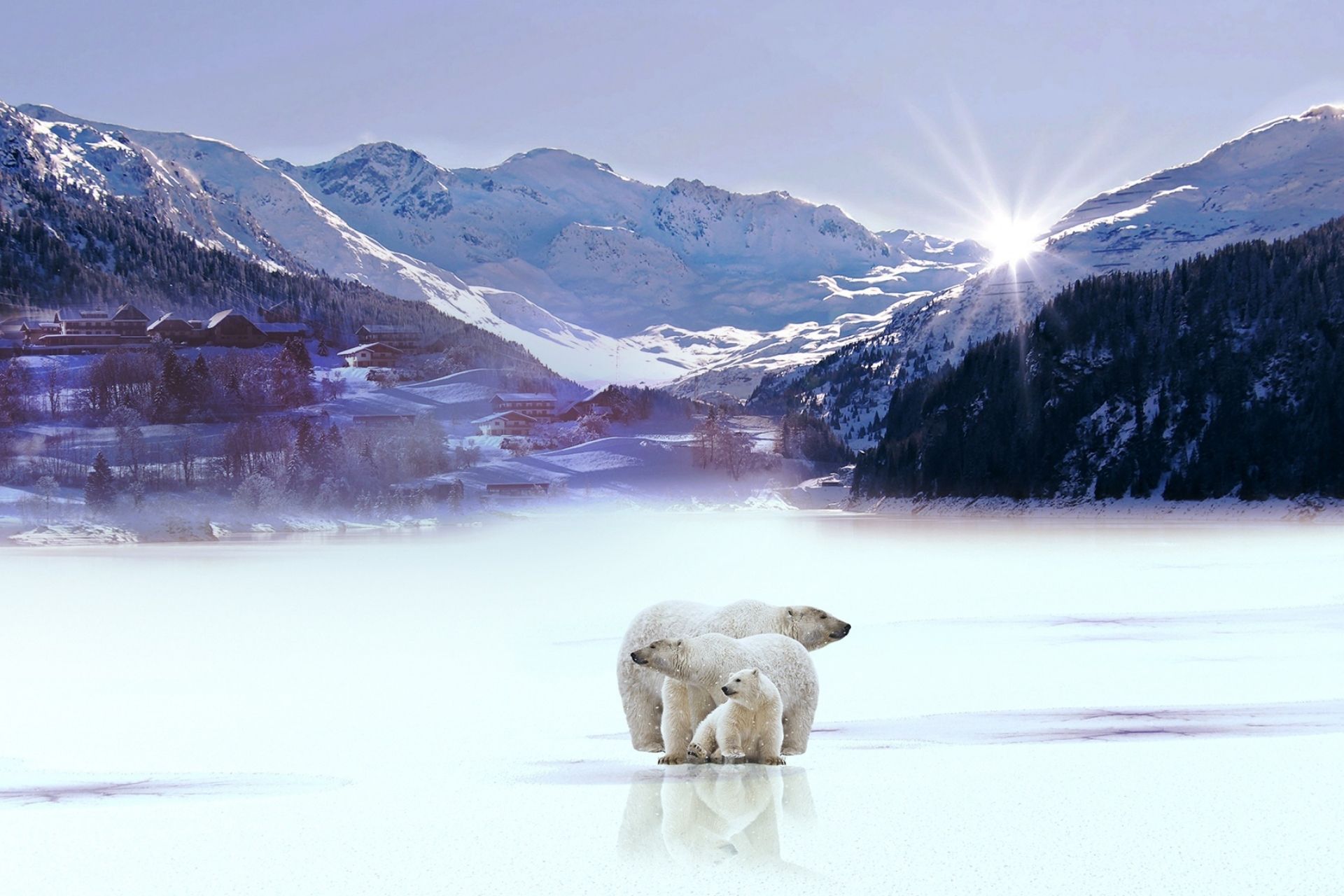Ice climbing

Every year, with the arrival of cold weather, the first ice flows begin to form and soon turn into walls with fascinating green and blue reflections, ready to be climbed. They are also poetically called “ephemeral ways” because they can only be tackled in short periods of the year and they always change according to the consistency of the ice.
It’s time to sharpen crampons and ice axes. The fun of ice climbing begins.
HOW IT WORKS
Ice climbing is a sport that requires some technical basis, but can be practiced by anyone and doesn’t require great physical strength.
It’s considered an extreme sport because it’s practiced on walls that can often change consistency, based on temperatures and weather conditions. For this reason, practice ice climbing only accompanied by a professional who can guarantee the safety of climbing ice falls.
Here’s how it works:
The climber tackles the wall with two ice axes and crampons. To go up it’s necessary to plant the toothed equipment firmly in the ice.
The secret to good ice climbing is knowing the environment. It’s in fact essential to test the consistency of the ice before climbing and studying the conformation of the waterfall.
For example, if the temperature is too cold the ice will be too hard and will tend to crumble; if it’s too hot the ice will be soft and won’t guarantee to hold the grip of the crampons and ice axes.
Once you arrive, in some cases you can make the return flight, in others you can walk the route to return to the starting point, or take the shuttle provided by the center.
WHEN and WHERE to GO
The ice is alive, it changes from time to time. Each waterfall changes according to the conditions and choosing the ideal spot is not easy. But there are some areas where ice climbing is particularly interesting, among others.
In Italy:
1) Serrai di Sottoguda (Veneto-Belluno)
At the foot of the Marmolada there is one of the ice amphitheaters most frequented by enthusiasts due to its ease of access, the aided itineraries and grades from second to fifth for the enjoyment of all.
2) Val Brandet (Lombardy-Brescia)
Numerous glacial structures form here in winter. Among these, the most interesting for the gliders is an endless waterfall with a development of 1000 meters and 600 in altitude formed by three flows that reach the maximum difficulty of 4 °.
3) Cogne Valley (Aosta-Cogne Valley)
In this valley there are so many ice falls that are formed, especially in Valnontey where the main peaks of the Gran Paradiso massif are located. When you climb here on ice, you feel like in Canada, but there are difficulty levels for all tastes.
In Austria:
4) Lech am Arlberg (Vorarlberg)
This area is perfect for everyone. You can also experience the thrill of Europe’s longest icefall.
5) Pitztal Valley (Tyrol)
All year round, the gliders wait for the moment when the 6 waterfalls in the valley freeze to tackle the highest ice climbing routes in Tyrol.
Here, in some places, ice climbing is possible all year round.
In Chile
6) Cerro Yerba Loca (Santiago)
This peak of 3,000 meters above sea level is the epicenter of ice climbing in central Chile. In the best years there have been about 50 waterfalls where the most daring have dared to climb. In some areas it’s also possible to mix routes, i.e. trekking and ice climbing.
7) Colgante del Morado (San Josè del Maipo)
This glacier at more than 4,000 meters above sea level it’s considered by many ice climbers to be the perfect place for ice climbing at any time of the year.
Contact us for a personalized itinerary in the best location where to practice this sport.
DOCUMENTS AND REQUIREMENTS
Ice climbing is practicable at various levels, therefore from beginners to experts.
It’s important to have a minimum of agility in movements, balance and a good dose of coordination.
RECOMMENDED CLOTHING and EQUIPMENT
Participants must wear long trousers and t-shirts so that the harness is not in contact with the skin.
Vital for practicing ice climbing are ice axes and crampons.
The crampons hook onto the boots. There are aluminum or steel crampons; to climb a vertical wall, steel crampons are preferable, less light, but more resistant.
Ice axes are a real extension of the ice climber arm. They are in fact planted in the ice one at a time to pull themselves up.
Other equipment that it’s advisable to have:
ice screws for securing on the wall, 60-meter waterproofed ropes, carabiners, descender brake, harness, water-repellent gloves and approved helmet.
During the flight you can wear sunglasses and eyeglasses.
The only condition is that they are not too loose: in this case it is necessary to put a safety cord for the descent.
IDEAL DESTINATIONS FOR THIS ACTIVITY
CONTACT US TO DESIGN YOUR CUSTOM ADVENTURE AND SPORT TRIP
Call now: +39 3492701273
Chat on Whatsapp: +39 349 2701273
Chat on Messenger: @7RTravel
Send an e-mail: info@7rtravel.com












